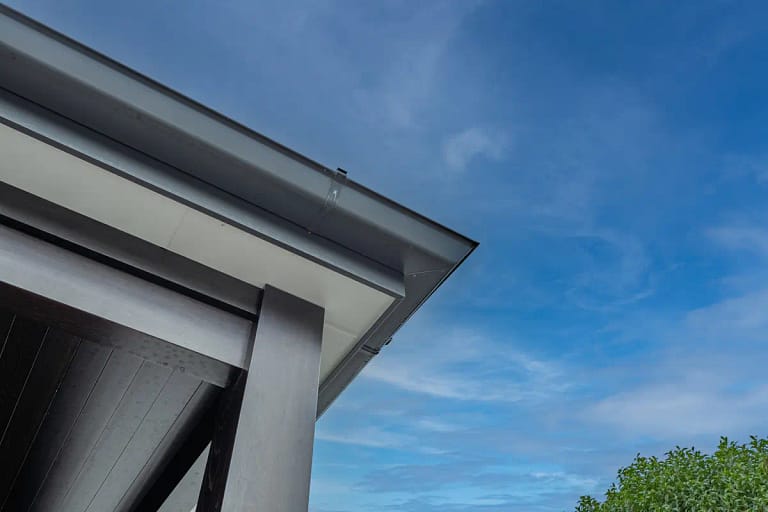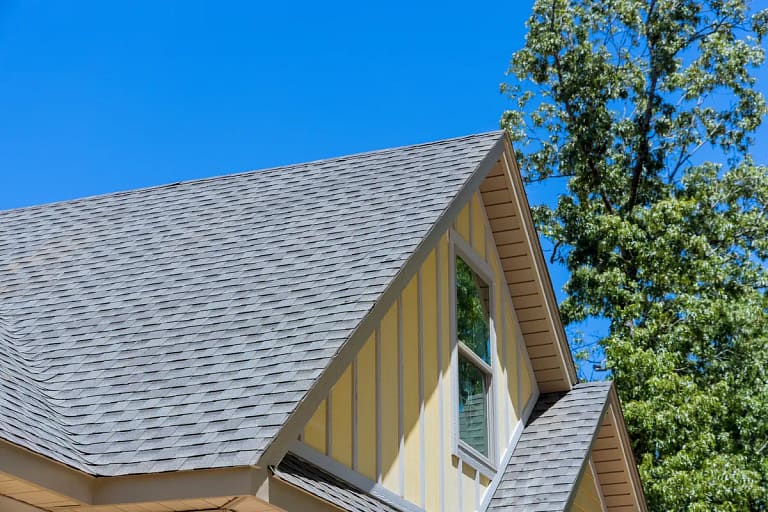Your asphalt shingles are designed to be able to withstand high winds. However, all roof shingles experience wear and tear over time as they become weaker due to age and exposure to the elements. They’ll also be more vulnerable if they weren’t installed properly.
One of the symptoms of a compromised roofing system is lifting shingles. Lifting shingles are Mostly caused by wind damage, among other things. However, they won’t always all lift at once — it’s usually a slow process due to frequent strong wind storms.
Below we’ll cover everything you need to know about lifted roofing shingles, including what to do to fix them.
The Main Causes of Lifting Shingles

Strong winds aren’t the only culprit behind your shingles lifting up. It’s generally a combination of things that contribute to this issue, including:
- Poor installation. If the original roofing contractor failed to install your roof shingles correctly — for example, nailing the shingle in the right spot — the corners will begin to curl over time. Each roof shingle should be nailed in the appropriate place to distribute weight and hold down the edges.
- Debris. Debris is like a silent shingle killer. Debris can easily be blown by the wind into any gaps underneath your shingles, especially if the edges have been lifted for a while. As more and more debris collects beneath your shingles, they’ll continue to lift until you have noticeably curling shingles.
- Damaged shingles. Damaged shingles easily lose their ability to withstand strong winds (and even not-so-strong winds). Shingles become damaged most often during storms, especially hailstorms. However, human interaction — such as walking around on your roof — can compromise asphalt shingles. Flying debris and even water damage can lift shingles as well.
- An aging roof. Asphalt shingles aren’t designed to last forever and they tend to break down quicker than most other roofing materials. As your roof continues to age and face wear and tear, lifted shingles will occur — as will buckling shingles and other types of shingle damage. Keep in mind that your asphalt shingles are only meant to last up to 20 years, and that lifespan can be cut drastically when subjected to severe weather storms and extreme temperatures.
What Happens When You Have Lifted Shingles?
When you have shingles lifting left and right, it’ll do more than just affect your home’s curb appeal. If you don’t take care of your lifted shingles, you can expect the following to start occurring:
- Water leaks. With lifted shingles all over your roof, water leaks are inevitable as they create an open path for rainwater to penetrate the underlayment and roof decking. Once these roofing materials are compromised, you can expect the water to enter your home, causing water stains on walls and ceilings and eventually damaging your floors and furniture.
- Mold, mildew, and algae growth. Where there’s excess moisture there will be mold, mildew, and algae. All of these things contain bacteria that will pose a health risk to you and your family as well as damage to your home’s structure.
- Blown-off shingles. When you have lifted shingles, it’s only a matter of time before they’re blown off your roof completely. Areas with missing shingles will become more susceptible to damage from not only water but all the elements. If you notice that your shingles are going missing, you don’t want to wait to call in a professional roofer.
- Damage to other roofing components and materials. Lifted shingles can easily turn into serious roof damage that requires a full roof replacement. This includes your roof decking, ventilation pipes, flashing, etc. Everything will become compromised, and severe damage can occur to your home’s structure.
What to Do When You Have Lifted Shingles: 4 Steps

When you start to notice that you have lifted shingles or any type of roofing problem, there are certain steps to take to prevent further damage from happening. It’s especially important to act quickly, as damage from lifted shingles can happen fast.
Here’s what you’ll need to do when you start noticing lifted shingles:
1) Call a Professional Roofing Contractor.
The first thing you want to do is find a professional roofing contractor in your area with a good reputation and schedule a roof inspection. Most contractors will want to take immediate action, and they’ll provide you with a thorough inspection, detailed report, and an estimate for the work that needs to be done.
2) Document the Damage
While you’re waiting for the professional roofing contractor to come for an official inspection, start documenting the damage yourself — but do so from the ground as it’s not recommended to climb up on a damaged roof! To do this, take photos from the ground up and take a look at your attic, ceilings, and walls for signs of roof damage.
3) Get Your Homeowners Insurance Company Involved
If you notice lifted shingles after a significant weather event, you may be able to file an insurance claim for the damages. Talk to your insurance company about what your policy covers and find out if you’re eligible to file a claim. If you are, make sure you fill out your insurance claim accurately, and include the detailed report provided by your professional roofing contractor.
4) Apply a Temporary Tarp If Needed

If there’s a large area of lifted shingles and storms are on the horizon, you may have to place a tarp over the damaged area. In most cases, your roofer can do this for you, but you may need to run to your local hardware store if they’re not going to make it in time to ensure that further damage doesn’t occur.
Get Professional Assistance
Lifted shingles aren’t ever something you want to neglect. Not only will they ruin your home’s curb appeal, but they can end up causing a lot of unnecessary damage. When you start seeing lifted shingles on your roof, take action immediately by calling in the experts.
That’s us — Johnson Restoration. We can take care of your lifted shingles and more. All you have to do is get in touch with us for a free inspection and no-obligation estimate and we’ll walk you through all of your options regarding materials, repairs, roof replacements, and anything else you need!






